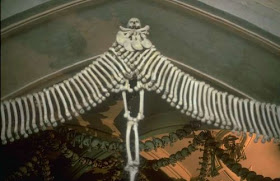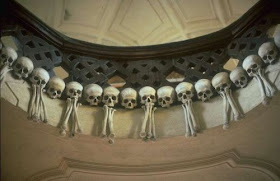This week, a friend of mine posted the above photo of a book in his family's collection. He had not seen this pattern of marbled paper before and was intrigued...as he should be! This is probably the most sought after pattern used for bookbinding paper....the Spanish Moire!
Examples of Spanish Moire
Photo from "Marbling- A Complete Guide to Creating Beautiful Patterned Papers and Fabrics" by Diane Vogel Maurer with Paul Maurer
Marbled paper is made by placing drops of color onto a thickened bath of chemicals and water.
The more elaborate patterns of marbled paper can have up to 15-20 steps, using handmade combs and rakes.
Marbleart.us
The basis of the Spanish Moire is the Spanish wave....easier to manipulate, but not for the beginner, the paper is gently rocked as it is lain on the surface of the bath, thus producing the lines- or waves.
Marbleart.us
These papers are hard enough to produce, but the Spanish Moire adds another step to the process....
You have to fold the paper in a certain way before you lay it on the marble bath...while gently rocking the paper...and tilting the bath!!! The paper above was made by marbler Iris Nevins and is from the book "Marbled Designs-A Complete Guide to Fifty-Five Elegant Patterns" by Patty Schleicher and Mimi Schleicher.
Iris Nevins photo
Iris uses parts of the Spanish Moire process and isolates the ripples or waves.
This is an example of Spanish Moire, with the almost three dimensional look of waves and ripples.
This is Spanish Moire at it's best! The design is distorted, shifted into almost a topographical map. Only the best marblers can produce this amazing look.
Similar to the Spanish Moire is this form of Suminigashi. Color is applied to the bath and then blown on and manipulated with a stylus into the more linear design above.
You can see that suminigashi is used for the background of this asian design.
Falling in love with marbling yet? You can get some wonderful reproductions in the
John Derian line now featured in Target stores.
Just check the stationary section for some beautiful organizers covered with traditional examples of marbled papers!
Thanks to
Steve Shriver for his passion and curiosity of the arts and thanks to
Regina Garay for linking him to a previous post I made on marbling! Love you guys!!








































